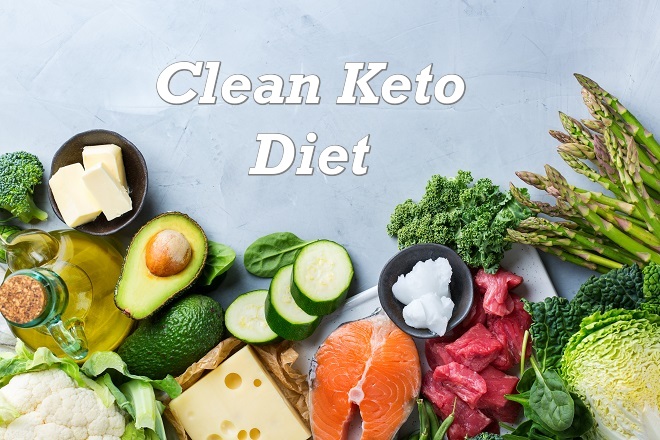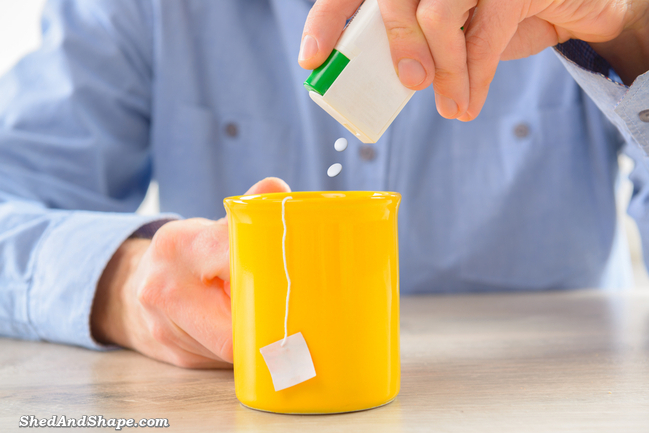The clean keto diet has been all the rage lately as more and more keto dieters are recognizing the long-term negative effects of “eating dirty” while on keto. Essentially, the main concept of clean keto is to eat real food, which is actually the right way of following the keto diet.
As you know, keto is a type of diet that requires you to restrict carb consumption and eat foods that are high in fats. Unfortunately, some people would get their fat intake from junk foods, which the dirty keto diet is all about.
Related reading: Keto Diet Fats: Best and Worst To Eat
In this article, let’s learn more about the clean keto diet and understand how it differs from the dirty keto.
What is Clean Keto Diet?
The clean keto diet follows the same macronutrient guidelines as the standard keto. However, it focuses on eating nutrient-dense whole foods instead of processed foods.
Related reading: Keto Macros Ratio | What’s Best for Fat Loss?
It’s basically a health-focused approach to the keto diet, combining the healthy nutrient density of the Paleo Diet with the keto diet’s fat-burning macros.
Dietician and keto diet advisor Molly Devine explained that clean keto means eating whole foods from quality sources, such as grass-fed beef, free-range eggs, pasture-raised pork, wild-caught seafood, and lots of veggies. According to her,
“Nutrient-dense, low-carb vegetables (such as arugula and spinach) and herbs help healthy cell growth, increase energy, and provide satiety as your body won’t be craving the nutrients it would otherwise be lacking following a dirty keto diet.”
In other words, following the clean keto diet means skipping fast foods and processed foods. Instead, you should focus more on eating the really healthy stuff.
Clean Keto Diet Versus Dirty Keto
The difference between the clean and dirty keto diet is pretty straightforward. Clean keto is focused mainly on eating whole and natural foods. Meanwhile, dirty keto is more about eating keto-friendly processed foods.
Followers of the dirty keto diet believe that, for as long as you are hitting your macronutrient requirement, you can eat whatever you want, including processed foods.
While you can still maintain ketosis even when you’re on the dirty keto diet, it does not have the same health benefits as clean keto.
Dirty keto can also refer to people who will occasionally eat high-carb foods but can still achieve ketosis. This is usually possible for those lucky enough to have high metabolic rates.
Related reading: Lumen Metabolism Tracker Review
Let’s take the cheeseburger from McDonald’s as an example to illustrate the difference between clean keto versus dirty keto. The bun-less double cheeseburger can fit well into your keto macros since it contains 21 grams of fats with only 3 grams of net carbs.
However, the meat used for the patty is factory-farmed, which means it could have hormones, steroids, and antibiotic residue.
Compared to grass-fed beef, factory-farmed beef is not as nutrient-dense. This means that it has a different fatty acid profile than grass-fed beef.
Meat derived from grass-fed beef contains up to five times more Omega 3 fatty acids than factory-farmed beef. In addition, it has twice as much CLA or conjugated linoleic acid. CLA is believed to protect us against cancer, diabetes, obesity, and other conditions.
Related reading: CLA for Weight Loss: Is It Worth Taking?
While you may be getting your keto macros for eating a bun-less cheeseburger from McDonald’s, you are getting less nutrition and micronutrients. Plus, it could contain food additives that could be harmful to your health in the long run.
Tips for Eating a Clean Keto Diet
Now that you know what a clean keto diet is and its benefits, it’s time to start eating clean on keto. Here are some tips.
1. Replace Processed Foods with Whole Foods
Instead of gorging on your favorite bun-less cheeseburger from your favorite burger chain outlet, make your own burger at home. Use grass-fed meat for the patty and top it with full-fat cheese from your farmer’s market. Organic is best if you can get it.
If you want, you can add bacon to your burger. Just make sure to use unprocessed, nitrate-free bacon.
2. Always Choose Healthy Fats
As you know, going keto means eating healthy fat-rich foods. This is what keeps you in ketosis, which is the main goal of the keto diet. But be mindful of the type of fats that you eat.
There are many fat sources out there, and some of them are not healthy. When following the clean keto diet, always choose healthy fats.
These are the type of fats that have anti-inflammatory effects on the body. Examples are some types of polyunsaturated and monounsaturated fats. You can get them from extra virgin olive oil, avocados and avocado oil, grass-fed butter, chia seeds, and good quality clean fish oil.
Related reading: Is Keto Anti-Inflammatory? Find Out Here
3. Eat Lots of Veggies
Add lots of low-carb vegetables to your meals. It’s the easiest way to get your daily dose of vitamins, minerals, and especially fiber. Fiber is very important for the keto diet as it saves you from keto constipation, a common symptom of keto.
Related reading: Keto Diet Constipation : How To Combat It
Eating fiber-rich veggies will also keep you feeling full longer and prevent overeating. By eating enough vegetables on keto, you are giving your body a healthy dose of important micronutrients. This can help keep you in optimal physical and mental health.
4. Avoid Artificial Sweeteners
When you start following the keto diet, you need to avoid sugar at all costs. As a result, people following the diet often opt for artificial sugar alternatives.
Related reading: Artificial Sweeteners on Keto? Good or Bad?
Unfortunately, these artificial sweeteners can take a toll on your gut health. They could kill gut-friendly bacteria and disrupt the stability of blood sugar.
For instance, Sucralose, a popular sugar alternative sold under the name “Splenda,” has been found to increase blood sugar levels by 14% and also increase sweet cravings.
When you need to sweeten your drinks or desserts, opt for gut-friendly, low glycemic sweeteners, such as monk fruit sweeteners.
Related reading: 4 Best Natural Low Carb Sweeteners
Final Thoughts
The keto diet is truly effective in helping you lose weight by limiting your intake of carbs and increasing your consumption of fats.
However, it is not enough that we focus on these macronutrients. We must not also lose sight of the more important priorities, such as your long-term health and feeling very best.
By following the clean keto diet, you will not only reap the benefits of keto, but you’ll also increase your micronutrients. As a result, you will truly feel your best, both mentally and physically.










